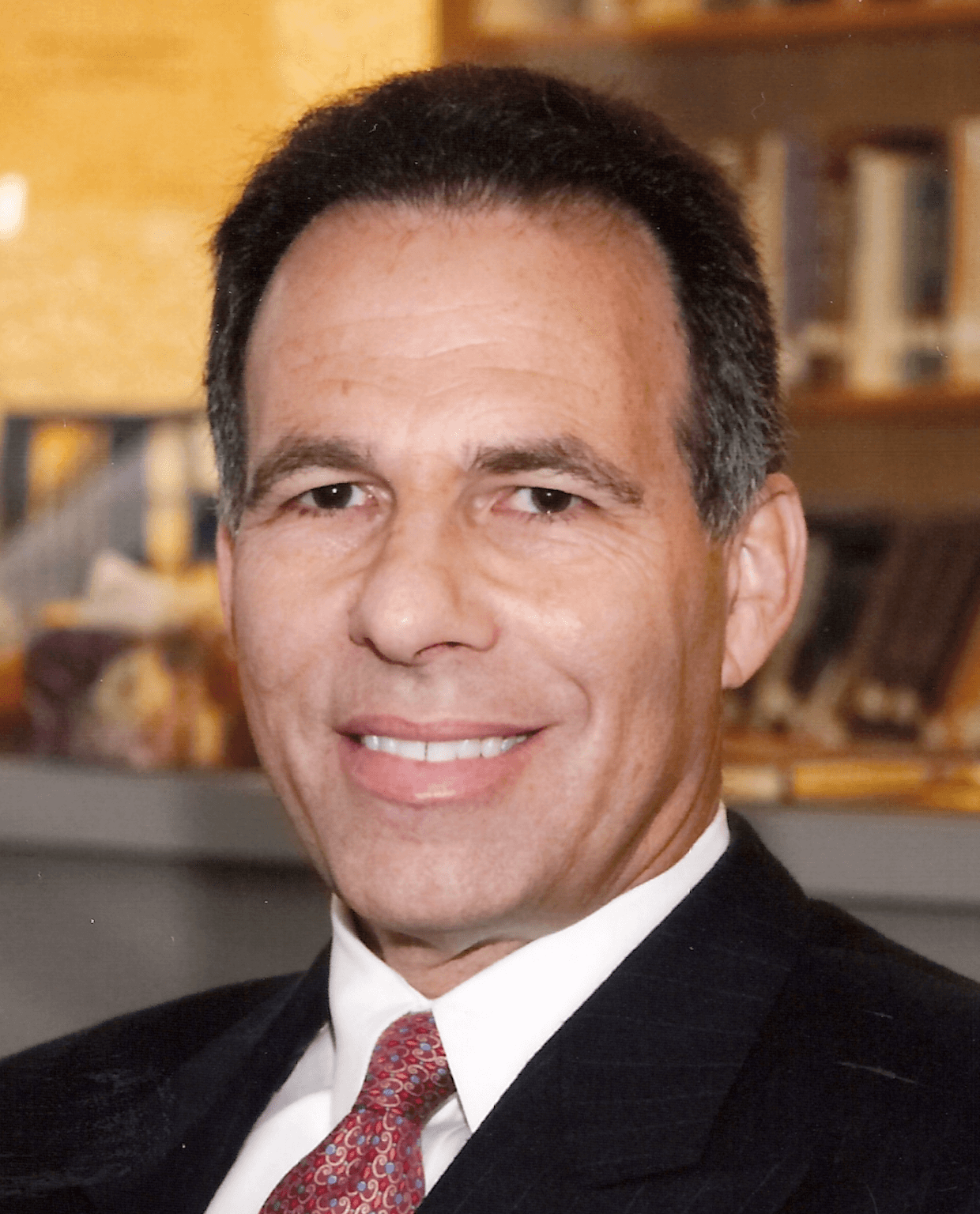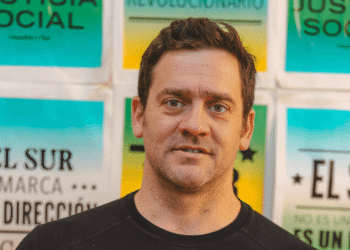In this insightful interview, world-renowned revolution scholar Professor Jack A. Goldstone warns that we are witnessing both “a descent into an authoritarian pattern across much of the world” and “the beginning of a revolutionary movement.” Professor Goldstone argues that today’s global instability—rising inequality, elite overproduction, populist anger, and democratic decay—signals the breakdown of the post–World War II liberal order. “The global and national institutions of the last 50 years,” he notes, “are falling apart.” Yet he remains cautiously hopeful: while “the next ten years will be very difficult,” he foresees that by the late 2030s, a new generation will “demand more accountability, more freedom, and use new technologies to build a better world.”
Interview by Selcuk Gultasli
In a wide-ranging and thought-provoking interview with the European Center for Populism Studies (ECPS), Professor Jack A. Goldstone—one of the world’s foremost scholars of revolutions and social change—offers a sobering yet ultimately hopeful assessment of the current global order. As the Virginia E. and John T. Hazel, Jr. Chair Professor of Public Policy at George Mason University, senior fellow at the Mercatus Center, and director of Schar’s Center for the Study of Social Change, Institutions and Policy (SCIP), Professor Goldstone brings decades of comparative historical insight to bear on today’s crises of democracy, capitalism, and governance. His diagnosis is clear and unsettling: “We are in a kind of descent into an authoritarian pattern across much of the world. That’s also the beginning of a revolutionary movement.”
According to Professor Goldstone, the present era is marked by the unraveling of the political and institutional order that defined the last half-century. “The global and national institutions of the last 50 years,” he explains, “are falling apart—they’ve come under strain for decades and are now being picked apart by both elite groups seeking advantage and populations deeply dissatisfied with financial crises, cultural clashes, and stagnant mobility.” This confluence of forces, he argues, signals not simply democratic backsliding but the early stirrings of a new revolutionary epoch.
Professor Goldstone situates these developments within the long cycles of political upheaval he has mapped throughout his career. His structural-demographic theory identifies three recurring stressors that produce revolutionary moments: rising government debt, the overproduction of elites, and mass grievances rooted in inequality and declining opportunity. Today, all three are present—governments are overextended, elites are multiplying faster than elite positions, and younger generations across the world are losing faith in social mobility. As he observes, “Failure of mobility is becoming the expectation… and that has huge effects on people’s optimism for the future and confidence in government. It creates the kind of anger that fuels a revolutionary moment.”
Yet, Professor Goldstone warns, the contemporary landscape also differs profoundly from past revolutionary ages. New technologies—from algorithmic media to artificial intelligence—are reshaping how truth, mobilization, and resistance operate. “The internet,” he notes, “was once seen as a tool of democracy, but governments have learned to weaponize it. They don’t shut down dissent; they drown it in misinformation.” In this digital ecosystem, both democratic discourse and authoritarian control are being transformed, deepening uncertainty about the trajectory of change.
Still, Professor Goldstone’s long-view perspective tempers despair with cautious optimism. While he predicts that “the next ten years will be very difficult,” he insists that revolutionary renewal remains possible: “From the late 2030s onward, we will see the next generation demanding more accountability, more freedom, and using new technologies to build a better world for themselves.” For Professor Goldstone, the world’s descent into authoritarianism may, paradoxically, set the stage for its next great democratic transformation.

Here is the edited transcript of our interview with Professor Jack Goldstone, revised for clarity and flow.
The World Is Entering an Authoritarian Phase—but Also the Dawn of a New Revolution
Professor Jack Goldstone, thank you very much for joining our interview series. Let me start right away with the first question: Throughout your career, you’ve explored how demographic pressures, elite fragmentation, and structural crises shape political transformation. In today’s world—marked by democratic erosion, rising authoritarianism, populist polarization, and a weakening rules-based order—how would you define this historical moment? Are we in a phase of democratic recalibration, a descent into authoritarian consolidation, or the early stirrings of a new revolutionary epoch? And what do these trajectories mean for the future of human rights, freedom, and global democracy?
Professor Jack Goldstone: Well, as a theme I will come back to during several of your questions, I’d say the answer is both—not either/or. That is, yes, we are in a kind of descent into an authoritarian pattern across much of the world. But that’s also the beginning of a revolutionary movement.
Revolutions are long processes. What we are seeing is a situation in which the global and national political institutions of the last 50 years are falling apart. They’ve come under strain for decades and are now being picked apart by both elite groups seeking advantage and by populations deeply dissatisfied with what has happened in terms of global financial crises, economic growth, social mobility, cultural clashes, and global migration.
All these pressures have overwhelmed both mainstream political parties and even the post–World War II liberal consensus institutions. So, yes, it’s the beginning of a revolutionary movement. It’s taking the form of a rejection of democracies increasingly seen as corrupt, self-serving, and ineffective for ordinary citizens.
Where that ends remains to be seen. Revolutions are long processes. We may go through a decade of authoritarian consolidation, but then that may turn around. In the long term, the world is going to move toward democracy—that’s the outcome consistent with growing education and increasing demands for autonomy.
But before we get there, we may experience a period of authoritarian distress, not unlike the 1930s. I hope we avoid wars on the scale of the 1940s, but we’re already seeing conflicts larger than any since that time. So, I do fear we’re entering a phase of authoritarianism and war. Yet, on the other side of that, there’s a good chance the world will emerge on a new path toward greater democracy and prosperity—much as it did after World War II.
Dictatorships Always Appear Stronger Than They Really Are

In some of your recent articles, you argue that democratic breakdowns and the re-emergence of dictatorships have reignited revolutionary cycles. How do you interpret this paradox in an era where regimes such as those in Russia, Turkey, and China appear to have mastered new techniques—digital surveillance, managed populism, and algorithmic governance—to pre-empt revolt and consolidate authoritarian rule?
Professor Jack Goldstone: I’d simply say that regimes have always appeared stronger than they really are. Before the Arab Spring, there was a widespread conviction among Middle East specialists that the region’s autocracies were stable, entrenched, and inherently suited to authoritarian rule. People forgot that the Middle East had been convulsed by revolutions in the 1950s and 1960s. But because from the 1980s to the early 2000s there were stable dictatorships that lasted for decades, many observers thought these regimes had found some key to survival. It wasn’t true.
The same was said of the communist regimes in Eastern Europe and the Soviet Union. They had crushed multiple uprisings in Hungary, Poland, and Czechoslovakia during the 1950s and 1960s. And yet, in the 1970s, when Gorbachev admitted that the Soviet Union was struggling economically—that the consumer sector was terrible, industries were falling behind, and reforms were needed—nobody imagined that would lead to the total collapse of communism within a decade.
Again, many autocratic regimes appear stronger than they are. They may be strong, but they’re also brittle. And that’s because politics, at the end of the day, is driven by one of two emotions: fear or anger. If people are fearful that the government will come after them if they protest, then protest will be suppressed. That’s how authoritarian regimes survive for decades. But if people become sufficiently angry—if they sense that the government is showing signs of weakness and that collective action might succeed—they can be remarkably courageous. The crowds that filled the streets in Moscow and Leipzig had no assurance they wouldn’t face violence, but they sensed widespread discontent and believed that acting together could bring change. The same thing happened in Cairo’s Tahrir Square.
So yes, there is new digital surveillance, and yes, regimes look tough. But if people truly feel compelled to challenge their government, they will. Digital surveillance is only an incremental advantage. Regimes have been targeting, imprisoning, and torturing dissidents for decades. China was just as harsh on opposition leaders after Tiananmen Square as it is today.
So, I don’t think we can say we’ve entered a fundamentally new era that makes dictators far more powerful. They do have new technologies at their disposal, but those don’t change the game entirely. They’re simply the latest tools in the ongoing struggle between governments and the people—a contest that has been unfolding for centuries.
Populism as a Prelude to Revolution?
Building on your structural-demographic theory, could the surge of populist movements across both developing and advanced democracies be viewed as pre-revolutionary signals of systemic stress? How does elite overproduction and the manipulation of anti-elite sentiment by insiders fit within your model of cyclical instability and regime decay?
Professor Jack Goldstone: The structural-demographic theory points to three major weaknesses or vulnerabilities that precipitate a revolutionary situation. One is government debt. That is, when government is unable to raise revenues because of resistance to taxation or economic difficulties, but expenses keep growing. And in the West, the aging of the population and the demand for retirement and healthcare and so on has kept expenses rising as the population’s gotten older. Meanwhile, the population is not growing as fast as it used to. So, the labor force is stagnating, and tax revenues are stagnating. So, we’ve seen Britain, France, Germany, the United States, China—all of these countries are dealing with problems of financing their government and growing government debt. So that’s one major element that no one seems able to escape, because they can’t find the rapid growth that would be necessary to balance the books against the growth in government spending that the populations demand. Plus, the rich are seeking more tax cuts for themselves wherever they can. That’s one element.
Second element, what you mentioned, the overproduction of elites. This is something that’s a little hard to understand, because it’s not just that more people are becoming qualified for elite positions. During times of economic growth and population expansion, that can be a good thing. As long as there’s a growing demand for more doctors, lawyers, accountants, financiers, engineers—after all, China blew its economy up four or five-fold increases—part of that was growing population, growing number of college graduates, growing number of engineers.
Overproduction of elites occurs when you have a growth in the number of people who consider themselves entitled to elite positions, but the number of elite positions that society is providing starts to stagnate or decline. And that leads to kind of a pileup, with more and more people hoping to obtain elite positions and unable to do so. So the visible sign of this is a sharp decline in social mobility—the number of people who are able to move from middle or working or lower class into upper-class positions that declines, because the number of upper-class positions starts to stagnate, and those who are already in those positions try and protect that status for themselves and their families.
For example, universities throughout the 1950s, 1960s, and even the 1970s were engines of social mobility. People went to college, earned degrees, secured white-collar jobs in government, finance, or the private sector, and contributed to sustained economic growth. But from the 1980s and 1990s onward, we began to see wealth becoming more concentrated. The elite universities gradually turned into what I call “the elites’ universities.” It became increasingly difficult for ordinary people to gain admission, as applicants were required to navigate meritocratic hoops that were increasingly dominated by families already entrenched in the upper echelons of the elite.
Declining Mobility, Rising Fury

It’s the decline of social mobility that’s really the marker of overproduction of elites. And we see this everywhere. Japan, China—you have the hikikomori in Japan, you have the lie-flat phenomenon in China. In Western Europe and in the United States, you have young people who are increasingly frustrated and angry that they’re not seeing the kind of expected gains in quality of life and lifestyle that their parents enjoyed.
We have data for the United States that shows for cohorts that were born in the 1940s and 50s, their rate of social mobility was almost 85% plus. Whereas for the cohorts that were born in the 1990s, early 2000s, their rate of social mobility—that is, earning a higher income in their 20s than their parents did—has dropped below 50%. Now, failure of mobility is becoming the expectation, and that has huge effects on people’s sense of optimism for the future and confidence in government. It creates the kind of anger that fuels a revolutionary moment. With the government continually burdened by excessive finance, financial debt, there’s not much the government can do to expand employment or provide alternatives. Governments are in debt, elites are getting stacked up, and social mobility is declining.
Then the third element is that the labor force grew with the baby boom. That was amplified by a big surge of immigration in the 1960s and 70s, and then again in the 2000s. The result of all of that is that the wage structure has stratified. That is to say, at the high end, professionals have continued to enjoy rising wages, but for the non-college-educated worker, especially non-college-educated men, real wages have stagnated or even declined over the last 30 years. That creates the sense of popular grievances among a majority of the population that is taking their anger out on those dominant elites who are pulling up the ladder and reducing social mobility.
Structural-demographic theory, in a word: government debt, elite overproduction and excess competition, and popular grievances about declining living standards and loss of opportunity. You put those three together, you have a collapse of faith in the existing government and institutions. That creates a revolutionary situation that can be exploited by leaders who want to lead a group of people who are interested in blowing everything up. People who are angry, frustrated, feel the government is not working in their interests, hasn’t done so for a while, and if they don’t create a dramatic change, they see their situation as only getting worse. That’s a revolutionary moment.
AI, Algorithms, and the Erosion of Reality

You have warned that unregulated social media “floods the zone” with disinformation, eroding democratic consensus. How do emerging technologies—especially artificial intelligence and algorithmic content curation—reshape the conditions for mobilization and revolution? Do these tools empower new forms of collective agency or primarily strengthen authoritarian regimes’ capacity for control and pre-emption?
Professor Jack Goldstone: Any new communications method—whether it was the printing press, radio, television, or now the internet—sets off a struggle between popular groups and governments to see who can control that medium more effectively to create and empower communities. In the beginning, radio and TV were hailed as great opportunities for popular education and strengthening democracy. But of course, whether it was in Germany with radio or in the Soviet Union with television, governments quickly figured out how to use those media and turn them into tools of propaganda. This, of course, happened even earlier with print censorship and government control of public publications. Wherever you see governments controlling media—whether newspapers, radio, or television—it inevitably becomes an outlet for propaganda.
Now, the idea behind the internet was that everyone could publish—that there was no way for the government to take it over. Bill Clinton famously said that if China wanted to run the internet, it would be like trying to nail Jell-O to the wall. The Chinese figured out how to use staples and glue guns. They managed to take control of the internet by creating their own workforce and bots so that if something appears online that Chinese authorities dislike, they don’t try to shut it down—since that would trigger backlash. Instead, they flood social media with contradictory or countering stories. Whatever the original truth or complaint was gets buried under waves of conflicting information, making it nearly impossible for the truth to emerge if there’s no trusted source that people believe.
Instead of having one or two major networks or print publications, we now have thousands. Everyone has their own podcast or internet channel, and people can say whatever they like. It’s completely unregulated. Anyone can lie—and have those lies widely distributed. The President of the United States can spread falsehoods on his own platform, Truth Social—ironically named. It’s reminiscent of how the Soviet Union had Pravda (“Truth”) as its flagship publication, and now the United States has Truth Social as the flagship for whatever stories a president wishes to tell.
The fact that AI can now fabricate visuals and stories at zero marginal cost—and spread them instantly—adds to the problem. But even without AI, the internet itself provides countless channels for misinformation. Originally, people thought the internet would be a great tool for mobilizing citizens against governments, a tool for democracy, because you couldn’t stop people from communicating with each other.
Yet communication for mobilization can also be undermined by a flood of false information. Even if the internet can build communities of resistance, it doesn’t provide the flesh-and-blood courage and solidarity that emerge from physical bonds of community, neighborhood, or religion. If you want to see effective resistance to authoritarian regimes, it still comes from those real-world ties, not just online chat groups.
Where the internet is truly dangerous, in my view, is in its distortion of reality. It makes it difficult for people to be certain of what is true and what is not, which in turn undermines the shared foundation needed to say: This is the truth we must defend. This is the goal we all want to work toward. When that shared reality fractures, complacency, passivity, and anxiety take hold. That’s the greatest danger I see in the social media world.
Still, people will overcome it—just as we’re beginning to rebuild real human bonds in schools, for example, with policies that require students to leave their cell phones in lockers during the school day. For eight hours, they must engage with friends, play real sports, read real books, and talk to one another. That’s a big improvement, and people will increasingly hunger for that kind of genuine connection. But over the last 10 or 15 years, we’ve seen real personal connections, genuine bonds, and confidence in truth significantly eroded by the easy access and superficial engagement fostered by social media. Still, I don’t think that’s permanent.
When Winning Becomes Losing

In “The Paradox of Victory” (with Bert Useem), you describe how movements that achieve short-term success often fail to institutionalize durable change. Could the Arab Spring, Occupy, and various anti-establishment populist movements exemplify this paradox—where mobilization triumphs are followed by democratic regression or authoritarian backlash? What determines whether such moments yield reform or re-entrenchment?
Professor Jack Goldstone: We’ve seen wild swings back and forth in many policy domains, largely because we’ve become so polarized. And by “we,” I mean the West—the United States, Europe, even Japan. When you look at governments today, instead of opposing parties working to hammer out compromises that could serve as the basis for broad, lasting agreement, you have factions trying to win narrow victories—ramming their views down the throats of the opposition and declaring, “We’re in power now, so we’re going to pass this law or push this policy.” The problem is that as soon as power shifts and the other faction takes control, they respond, “We’re going to repeal everything our opponents did and push our own agenda.” But that doesn’t endure either, because there’s no broad consensus to sustain it.
If we look back at the transformative actions of the 1960s in the United States—building the Great Society, advancing the Civil Rights Movement—leaders then tried to bring on board a broad coalition of different actors. For example, Social Security was not presented as a socialist-style welfare state. In the US, Social Security—pension payments to seniors—was framed as something individuals earned through their contributions.
What other countries saw as a welfare state, American politicians presented as a fair return on an individual’s labor. That framing created broad public consent, so much so that people now consider Social Security payments a basic right of American citizenship. Yet those same people will say, “We reject socialism, but Social Security is something I earned.” It was all in the presentation—a deliberate effort to build compromise and a shared foundation.
If you look at other policies, healthcare—Obamacare, for instance—was a narrow Democratic victory, and Republicans have been trying to dismantle it ever since. Affirmative action once had broader support for a few decades, especially in areas like housing, where people agreed that discrimination was wrong. But school integration—especially when it involved busing students far from home—was never widely accepted. Affirmative action, in general, has always been marginal. America never fully embraced the idea of creating broad-based justice for minorities. It was always piecemeal — “a little bit here for this group, a little bit there for that one.” And now, it has become deeply unpopular, to the point that most affirmative action policies have been or are being rolled back.
This kind of policy instability is damaging. It’s hard for people to plan for the future if policy changes radically every four, six, or eight years. It’s hard for businesses, it’s hard for families, and it erodes public confidence in government when governance itself becomes a football kicked back and forth between two opposing teams. It makes it look like each party is just in it for itself. People start asking, “Who’s looking out for me? Who’s watching out for the ordinary citizen?”
If government doesn’t have a widely accepted set of goals to lift everyone up, then what’s the purpose of it? It just becomes my faction versus your faction. So, when I talk about “the paradox of victory,” what I mean is that you can win something by a narrow margin in the short term—but those narrow, short-term victories often turn into long-term failures for society as a whole. Because without stability, consensus, or shared values, each side’s win just breeds more polarization, more backlash, and more chaos. Each victory overturns what came before, creating insecurity and uncertainty. It might feel good in the moment to say, “We won this year,” but that’s not a victory for society.
Capitalism: From Engine of Progress to Source of Revolt
In “The Handbook of Revolutions in the 21st Century,” you identify global capitalism and corrupt elites as key drivers of revolutionary pressure. How do you interpret the global resurgence of state capitalism—from China’s digital authoritarianism to Western neo-industrialism—as both a mechanism for managing inequality and a source of renewed instability within the international political economy?
Professor Jack Goldstone: In general, I am an enthusiastic supporter of capitalism. By that, I mean there’s no better way than free market competition and the price mechanism for encouraging enterprise and rewarding effort. That is to say, as long as the rules of the game encourage competition, fair dealing, open information, and open opportunity, capitalism can be effective in promoting social mobility, economic growth, higher productivity, and innovation. But, as we all know, capitalism is also prone to control by monopolies and oligopolies.
When oligopolies and monopolies start to dominate, when elites monopolize the key positions in society, you no longer get those benefits for the average person. Instead, you see growing inequality, less social mobility, more difficulties for the average worker, and greater political and economic influence for those who control the largest corporations and main financial institutions. So, while I’m in favor of capitalism, if it becomes too unregulated and allows excessive concentration of wealth and power, it tends to produce revolutionary pressures—fueled by the anger and frustration of those left behind.
During the Cold War, capitalist countries were on the defensive, and capitalist elites tolerated higher taxation on the rich. They accepted stronger unions. All of that was seen as necessary to respond to the challenge of communism, which promised a worker’s paradise and claimed to put workers first. The response to communism since the 19th century has always been to give workers better wages, greater benefits, and more opportunities.
But after the Cold War, when communism seemed defeated and gone, capitalism was unleashed. It was like, “We’ve won this fight—capitalism is clearly the better system—so let it rip.” Globalization accelerated. The market was left to “do its thing.” Profits were good. Greed was good. Unions and regulations were portrayed as obstacles. And what did that bring us? The speculative bubble of the dot-com boom, followed by the unrestrained credit excesses that led to the Great Recession of 2007–2008, which devastated small homeowners.
Those two crises showed that letting capitalism run unchecked leads to instability, wealth concentration, and periodic crises. Look at the United States today: the economy seems to be doing well, but more than half of all private consumption comes from just the top 20% of earners. We’re seeing taller penthouses, bigger yachts, and greater private art collections—but not more investment in public parks, schools, or health systems. Public goods that help ordinary citizens gain security are being weakened, while systems that help the very rich accumulate even more wealth are being strengthened.
At that point, capitalism shifts from being a powerful engine of progress to something that actually undermines the social bonds, confidence, optimism, and shared values that sustain social cohesion and a well-functioning democracy. That’s why I think so many of today’s democracies are in a revolutionary situation that’s opening the way for authoritarian leaders. We’ve allowed capitalism to go too far in the direction of wealth concentration. That’s a normal cycle, but I believe it always has to be regulated to some degree.
From Liberal Order to Ethno-Nationalist Empire

And lastly, Professor Goldstone, your comparative work on historical state crises suggests that revolutionary waves accompany periods of hegemonic decline. Does the erosion of the liberal, rule-based order—through geopolitical fragmentation, trade nationalism, and elite polarization—mark the onset of a new world-systemic revolutionary cycle comparable to those surrounding 1789, 1848, or 1917?
Professor Jack Goldstone: Yes, I think they do. There’s no question that today we are in a worldwide pattern of ethno-nationalist populism. It has already triumphed in Russia and China, where there’s a very strong emphasis on national and ethnic identity as the basis for national cohesion, and that identity is embodied by a strong leader—whether it’s Putin or Xi Jinping. That pattern was once seen as the antithesis of Western democratic values but has actually turned out to be the leading edge of a global ethno-nationalist authoritarian movement.
We see this with the rise of anti-immigration parties. They’ve taken power in Hungary, briefly in Poland, and they’re becoming a larger part of coalitions across European countries. And clearly, in the United States, we now have a government willing to enact authoritarian measures against foreigners—against immigrants if they are suspected of being illegal. We’re bombing fishing boats on the high seas in an act of war to protect our borders from drugs.
The motivating idea now behind the American government is “America First.” “America for Americans”. There’s even a movement to end birthright citizenship and say that you can’t just be born on American territory—you have to be born of American citizens. I don’t know if that will become law or not—it has never been the case—but the fact that we now have a government pursuing that goal, restricting citizenship, becoming more hostile to foreigners, and becoming harshly militarized against suspected illegal immigrants, shows we’re in a worldwide wave of ethno-nationalist populism that has gained power because of the ineffectiveness, turmoil, and collapse of trust in democratic institutions.
Now, you ask, is this like other waves of revolution? Yes—and all waves of revolution are eventually succeeded by a period of consolidation, but then often change. The French Revolution went through phases of republican, authoritarian, and Napoleonic empire—even the restoration of the monarchy. But then, a couple of decades later, there was another revolution to promote constitutional rule. And after several cycles, the French government eventually settled into democracy after 1870.
Across Europe in the 1930s, you had ethno-nationalist authoritarian leaders. This was true of Eastern European states, Germany, of course, and the countries Germany conquered. There were a few exceptions, but for the most part, Europe was given over to dictatorship and ethno-nationalist ideology. After World War II, that reversed.
Hope Beyond the Authoritarian Tide
Now we’re in another wave that reminds me very much of the 1930s—weak democracies accused of being corrupt, elites under attack, and popular strongman authoritarian leaders rising while mainstream parties are cast aside. The mainstream parties have failed in France. Right now, Labour looks very weak in Britain—even after winning a huge majority, they seem ineffective. The ethno-nationalist British Reform Party looks like it’s gaining strength. In France, it looks like the National Rally will be effective.
So, we have a global populist authoritarian movement—and they’re aware of it. These authoritarian leaders meet at The Conservative Political Action Conference (CPAC), share notes, encourage one another, and actively support each other in their quest to create ethno-nationalist authoritarian states.
I’m worried that the 2020s will look like the 1930s in that regard. And, as I say, there may be wars as a result. I don’t rule out the possibility that America and China may go to war over Taiwan. We already see this endless war in Ukraine. I don’t know where others may break out, but ethno-nationalism tends to breed conflict because, by its nature, it’s exclusionary and often hostile.
So, I expect the next ten years to be very difficult. But I’m hopeful that from the late 2030s onward, we will see the next generation of young people demanding more accountability, more freedom, and wanting to use new technologies to build a better world for themselves. So, I remain optimistic in the long run, even though pessimistic, unfortunately, for the next five to ten years.


